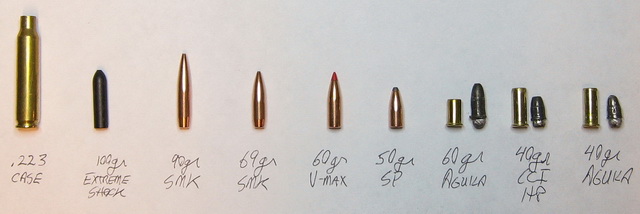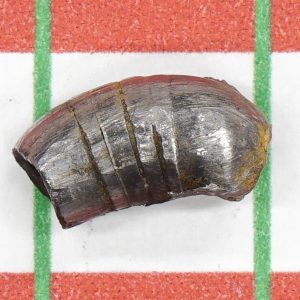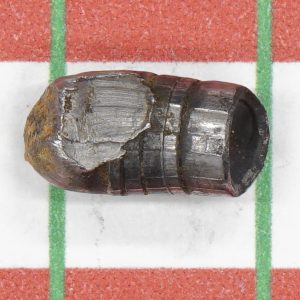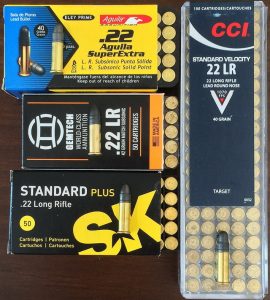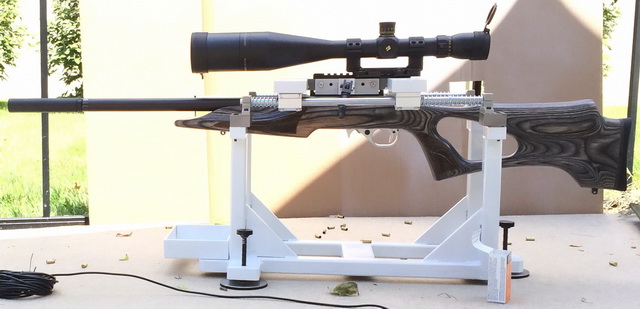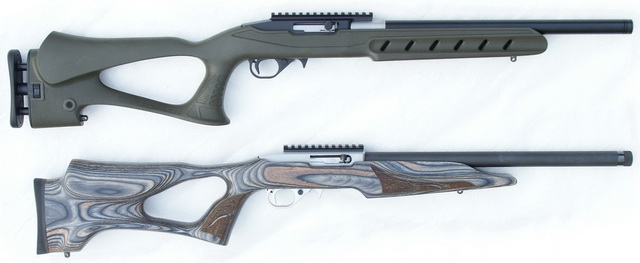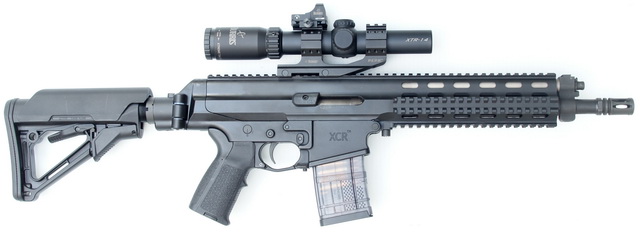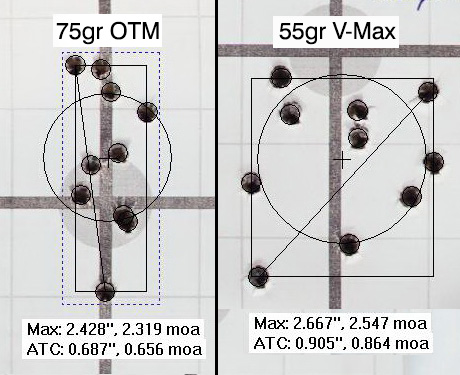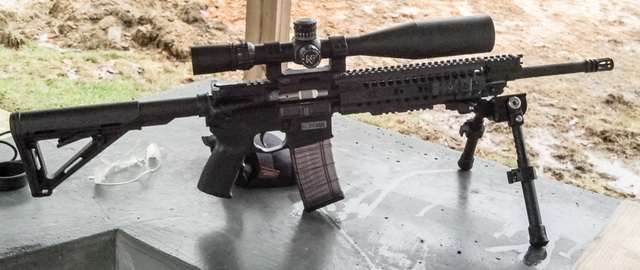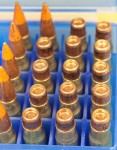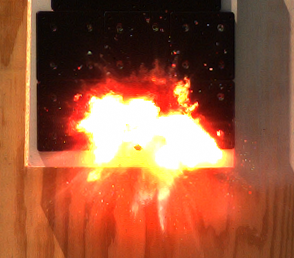Following some renewed interest in my old post on The Missing Subsonic .22LR Market, I figured it would be worth posting some of the notes I made during my last journey through that topic. The purpose of that post was to wonder why Aguila is the only manufacturer in the world making .22LR bullets significantly heavier than 40gr. To explain why that’s of any interest let’s take a few steps back.
Why the obsession with subsonic bullets? The answer is, “Peace and quiet.” A typical center-fire rifle shot meters about 165 dB a few feet from the muzzle. A good silencer reduces that by 30-35 dB, making it hearing-safe to shoot, but by no means “silent,” nor even quiet. The largest component of the sound signature of a silenced rifle shot is the bullet’s “sonic crack”: A supersonic projectile creates pressure waves that reverberate along its entire flight path, and in the case of a rifle bullet these create roughly as much sound as an unsuppressed .22 rimfire shot. In fact, people working in the target pits hundreds of yards downrange from a firing line are generally required to wear hearing protection because the sonic crack of bullets passing close overhead can still cause hearing damage.
So at some point after one buys a rifle silencer one begins to wonder how to make it even quieter. Having absorbed most of the muzzle blast in the silencer itself the next step would be to eliminate the sonic crack. This requires changing the rifle load so that the bullet’s velocity is reduced from its usual 2500-3200fps to a subsonic velocity — 1100fps under standard atmospheric conditions.
“No problem. Let’s just double or triple the bullet weight,” one might naively say. Unfortunately it’s not that easy. A 55gr .223 lead bullet, which shoots about 3000fps, is typically 3/4″ long. A 150gr bullet driven by the same load would be subsonic, but to be reasonably aerodynamic it would also be almost 2″ long, and this is where we run into some inconvenient facts about ballistics. We’re talking about rifles, and why are they rifled? In short: to keep the bullet pointed in the right direction. Rifling imparts spin to bullets fired through a barrel, and it turns out that the twist rate of the rifling is somewhat particular to the bullets a gun is designed to shoot. A bullet has to spin at a certain minimal rate to maintain stability throughout its flight. If it doesn’t spin fast enough then aerodynamic forces will cause it to yaw or even tumble, which disrupts all of the careful work that went into making a rifle that could send a bullet over a long and accurate flight path.
Spin Stability
One of the most accessible spin models for small caliber bullets is the “Miller Stability Formula” which estimates gyroscopic stability based on four parameters:
- Rifle twist rate
- Muzzle velocity
- Bullet length
- Bullet weight
Holding all else constant, bullet flight stability increases with higher muzzle velocity or twist rate (either of which cause it to spin faster), and decreases with shorter or lighter bullets (both of which require the bullets to spin faster to sustain stability).
According to the Miller formula a 2″ .223 bullet weighing 150gr and shooting 1000fps would require 1:4″ rifling (that’s one full turn in just 4″ of barrel length!) to stabilize. Neither bullets nor barrels are made anywhere near those specifications. The fastest rifling you can find in .22″ barrels is a sharp 1:6.5″, which at subsonic speeds is barely sufficient to stabilize the heaviest .22″ rifle bullets on the market, which are 1.16″ long 90gr boat-tail target bullets.
Granted, at subsonic velocities aerodynamic profile isn’t as important. So what are the heaviest bullets we can shoot with a .22 rifle? Lead has a specific gravity of 11, which means that for a given volume it weighs 11 times as much as water. Water weighs 253gr per cubic inch, so a .22″ diameter slug of lead (which has a volume of .038 cubic inches per inch of length) weighs 106gr per inch. If we are willing to fire a ballistically inefficient flat-nosed, flat-base, unjacketed lead slug then, according to the Miller Formula, a standard 1:9″ barrel can just barely stabilize about a 90gr (.9″ long) bullet at 1000fps.
Extreme Shock makes pricey 100gr tungsten-powder slugs that are slightly denser than lead and will stabilize in 1:7″ barrels at subsonic velocities. If you don’t mind spending over $1/round that could be a decent route to go. But if you try lighter or pointier bullets you run into other problems related to case volume: Hodgdon has published two subsonic loads for .223 Remington. One of them uses a tiny amount of fast-burning powder, which turns out to be very problematic. After two out of six test loads I made fizzled and left the bullet stuck in the barrel Hodgdon techs noted that their TiteGroup subsonic recipes are very sensitive to variation. They now recommend only using the exceptionally bulky TrailBoss powder, which will reliably get the bullet out of the barrel, but (at least in my experience) not at very consistent velocities.
My conclusion: Why bother? Due to the stability constraints in .22 caliber with conventional bullets you can’t go much past 70gr anyway. Forget trying to get a .223 autoloader to cycle on such light loads. Meanwhile, for a fraction of the price you could be shooting Aguila’s 60gr .22LR, or any number of grades of 40gr .22LR.
